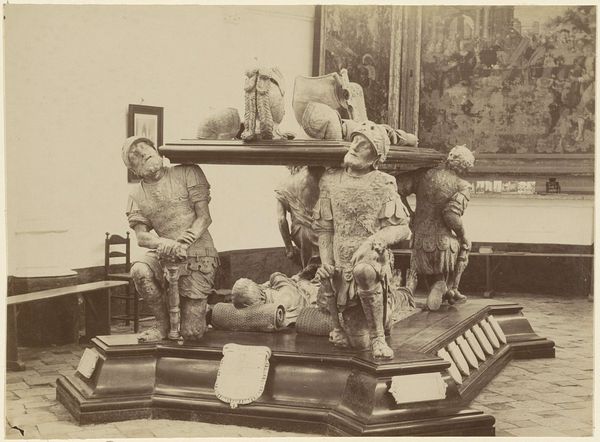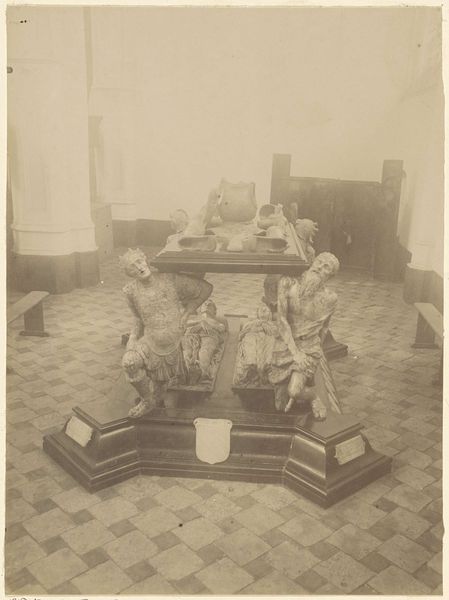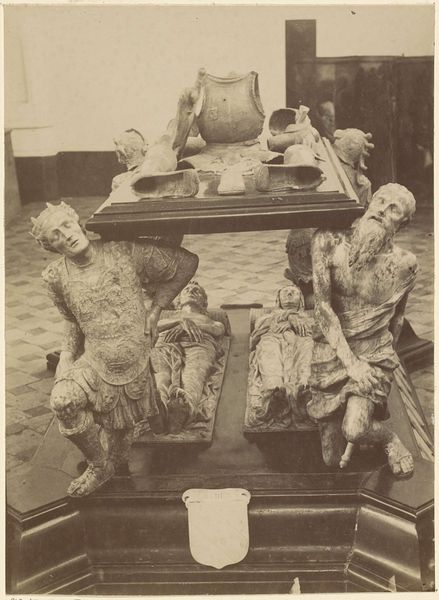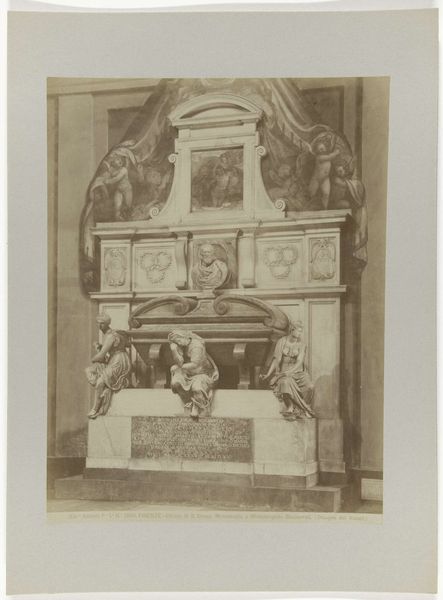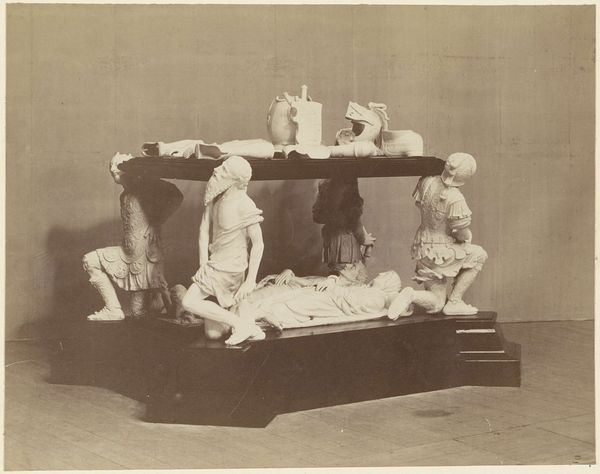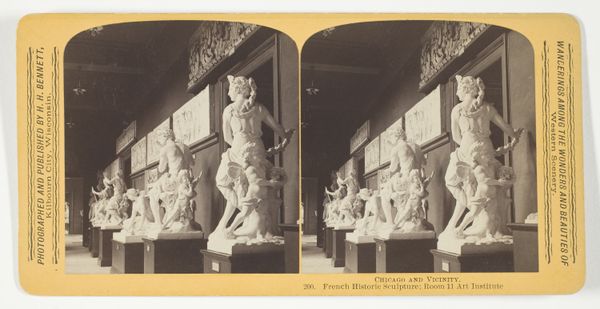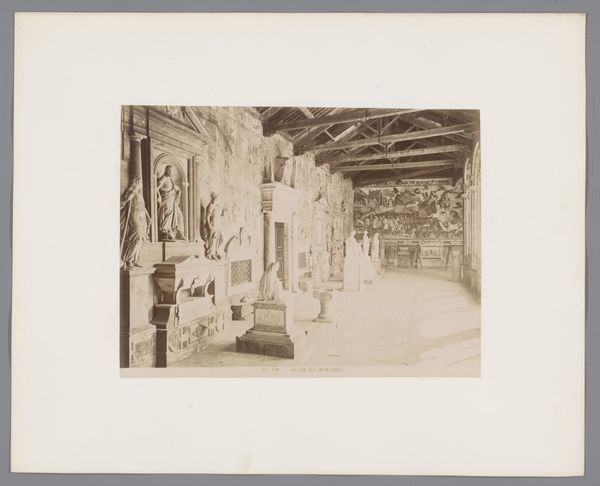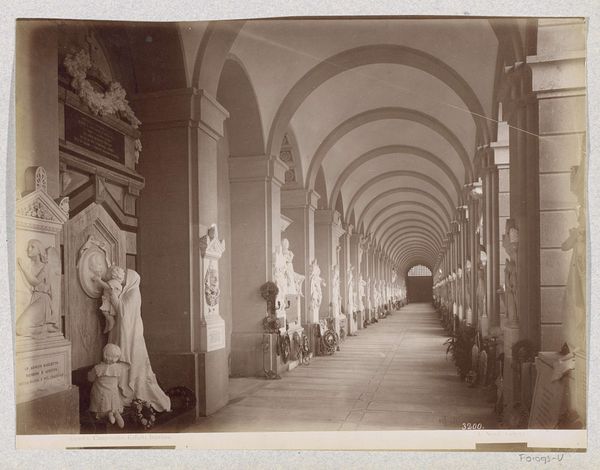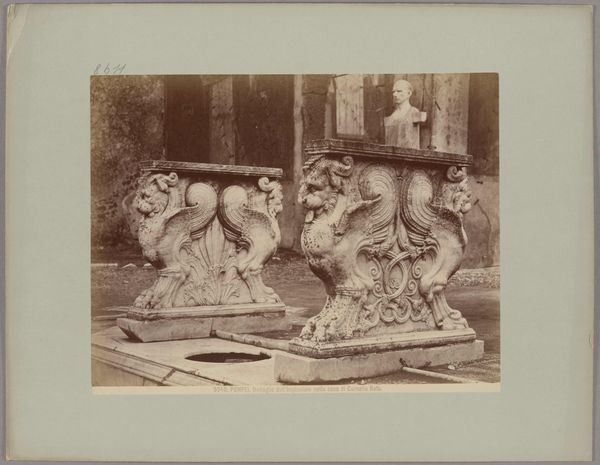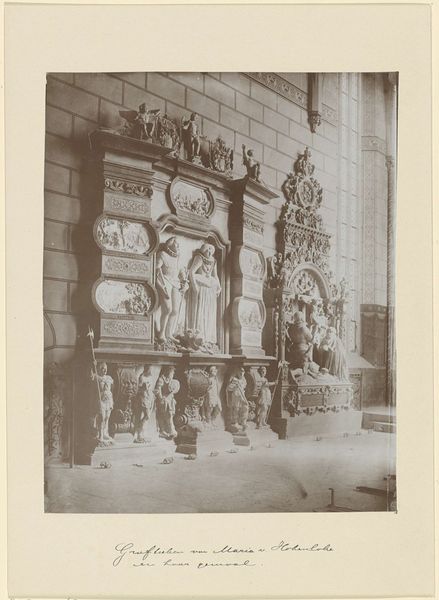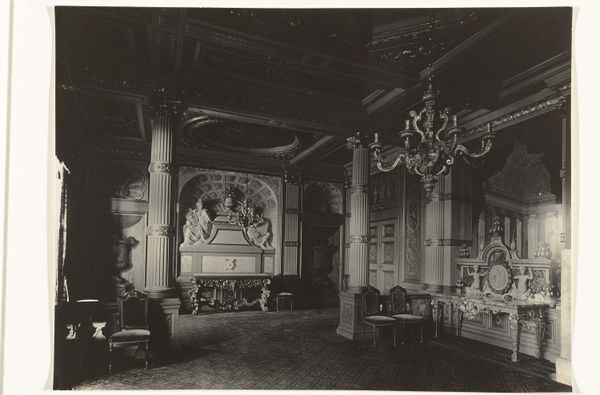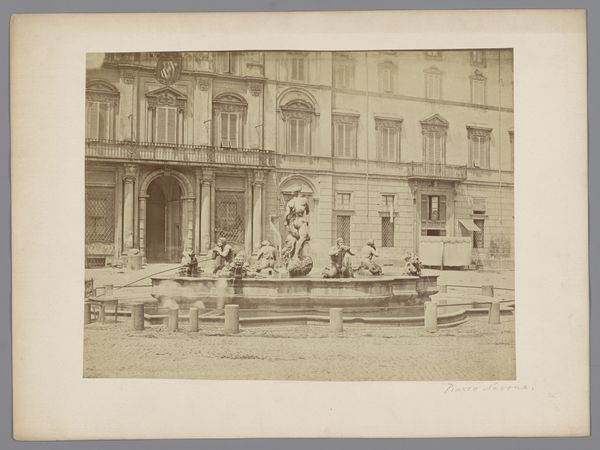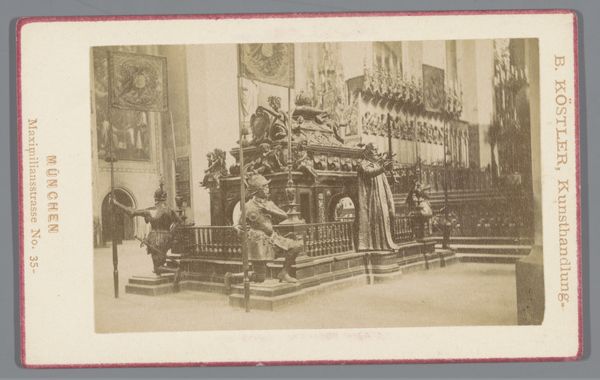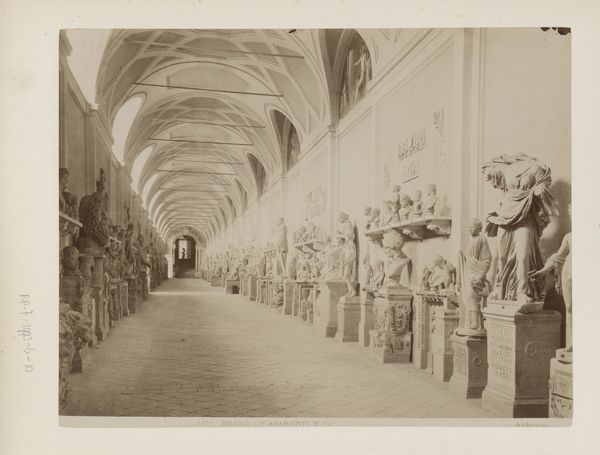
Grafmonument voor Engelbrecht II, graaf van Nassau-Dillenburg-Breda, 1504 1850 - 1930
0:00
0:00
anonymous
Rijksmuseum
Dimensions: height 97 mm, width 139 mm
Copyright: Rijks Museum: Open Domain
This photograph captures the 1504 funerary monument for Engelbrecht II, Count of Nassau-Dillenburg-Breda, by an unknown artist. Dominating the monument's visual language are the Atlas figures, reminiscent of ancient Greek mythology, bearing the weight of the entablature. This motif, deeply embedded in the Western psyche, appears across centuries – from the myth of Atlas condemned to hold up the heavens, to architectural supports in Roman temples. We see it echoed in Renaissance sculptures, where figures shoulder the burden of architectural elements or sarcophagi. This act of bearing weight transcends mere physical labor; it symbolizes duty, sacrifice, and the weight of responsibility. Consider how this motif has evolved: In ancient times, it signified divine punishment. During the Renaissance, it transformed into a display of strength and stoicism. In Engelbrecht's monument, it evokes the collective burden of grief and remembrance borne by society. Such expressions tap into our collective memory, resonating with the subconscious understanding that burdens—both literal and metaphorical—shape our shared human experience.
Comments
No comments
Be the first to comment and join the conversation on the ultimate creative platform.
